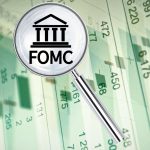Expect to pay more for an HECM, but you’ll gain flexibility
:max_bytes(150000):strip_icc():format(jpeg)/Olderadultsdiscussingfinances-bf197fb961e24d8582ea87daeaefee70.jpg)
kate_sept2004 / Getty Images
Fact checked by Timothy LiReviewed by Lea D. UraduFact checked by Timothy LiReviewed by Lea D. Uradu
If you’re a homeowner age 62 and older, you may be considering a reverse mortgage to tap into your home equity. After all, a reverse mortgage can provide much-needed funds for basic living expenses, medical bills, and home repairs—while you remain in the home.
There are several types of reverse mortgages, including the home equity conversion mortgage (HECM) and single-purpose reverse mortgage. The HECM is the most widely used reverse mortgage and offers the most flexibility. On the other hand, a single-purpose reverse mortgage can be a cheaper way to fund a specific expense, such as property taxes or home repairs.
Key Takeaways
- A reverse mortgage is designed for homeowners age 62 or older who want to tap into their home equity to pay for basic living expenses and healthcare costs.
- Instead of paying a lender, the lender pays you based on the equity you’ve built in the home. The loan balance becomes due if you sell the home, move away, fall behind on property taxes, or die.
- Reverse mortgages are often prohibitively expensive due to the fees and premiums.
- A home equity conversion mortgage (HECM) is the Federal Housing Administration’s reverse mortgage program, representing the bulk of the reverse mortgage market.
- A single-purpose reverse mortgage must be used to pay for a single, lender-approved expense, such as property taxes or necessary home repairs.
What Is a Reverse Mortgage?
Most people who buy a house need a mortgage to finance the purchase. After years (or decades) of mortgage payments, much of your net worth can be tied up in your home’s value. This can be troublesome for older adults trying to cover basic living expenses, healthcare costs, home improvements, etc.
A reverse mortgage lets homeowners age 62 or older convert some of that home equity into cash to pay bills and meet other financial obligations. Instead of making payments to a mortgage lender, the lender pays you money based on the equity you’ve built in your home.
How Does a Reverse Mortgage Work?
Like a regular mortgage, your home is collateral for a reverse mortgage. You can generally receive the funds in a lump sum, equal monthly payments, or a line of credit. Your debt increases over the loan’s life while your home equity decreases.
When you sell the home, move, or die, the home’s sale proceeds go to the lender to repay the loan. If the house sells for more than you owe, the difference goes to you—or your estate if you are deceased.
Reverse Mortgage Costs
At first glance, reverse mortgage rates may seem lower than other mortgages. However, numerous fees can make reverse mortgages prohibitively expensive, including:
- Mortgage insurance premiums (MIP): Two percent initial MIP at closing and an annual MIP that’s 0.5% of the outstanding mortgage balance
- Third-party charges: Appraisal, title search and insurance, surveys, inspections, recording fees, mortgage taxes, and credit checks
- Origination fees: The greater of $2,500 or 2% on the first $200,000 of your home’s value plus 1% of anything over $200,000, capped at $6,000
- Loan servicing fees: Up to $30 per month if the loan has an annually adjusting interest rate or fixed interest rate and up to $35 per month if the interest rate adjusts monthly
- Interest: Many loans have variable interest rates, which can increase over time and raise the cost of borrowing
And, since reverse mortgages are open-ended—meaning there’s no fixed payoff date—the interest and fees can accrue for a long time before the borrower sells, moves, or dies.
Warning
Reverse mortgage scams happen. If you suspect a scam—or that someone involved in the transaction may be breaking the law—tell your lender or loan servicer and file a complaint with the Federal Trade Commission (FTC), your state attorney general’s office, or your state banking regulatory agency.
What Is a Home Equity Conversion Mortgage (HECM)?
A home equity conversion mortgage (HECM) is a reverse mortgage program insured by the Federal Housing Administration (FHA) and issued through FHA-approved lenders. HECMs represent nearly all of the reverse mortgages that lenders offer on homes valued below $1,149,825 (above that, you’ll need a jumbo or proprietary reverse mortgage).
There are strict borrower and property requirements for HECMs. Here’s a rundown of what to expect:
HECM borrower requirements
When you apply for an HECM, the lender will verify your income, assets, monthly living expenses, credit history, and timely payment of real estate taxes and hazard/flood insurance premiums. Additionally, you must:
- Be 62 or older
- Own the property outright or have considerable equity in it
- Live in the home as your principal residence
- Not be delinquent on any federal debt (e.g., taxes, student loans)
- Have the financial resources to pay property taxes, insurance, homeowners association (HOA) fees, and the like
- Participate in a consumer information session given by a HUD-approved HECM counselor
HECM property requirements
Eligible properties—which must meet all FHA property standards and flood requirements—can include:
- Single-family homes and two to four-unit homes (e.g., duplexes) with a borrower-occupied unit
- HUD-approved condominium projects
- Individual condo units meeting FHA single-unit approved requirements
- Manufactured homes that meet FHA requirements
The money you receive from a reverse mortgage is usually not taxable and won’t affect your Social Security or Medicare benefits.
What Is a Single-Purpose Reverse Mortgage?
Single-purpose reverse mortgages are far less common than HECMs. These mortgages are offered by state, local, and nonprofit agencies and tend to be the least expensive reverse mortgage option.
While you can use an HECM to pay for everyday living expenses, single-purpose mortgage funds must be used to pay for specific, lender-approved items, such as property taxes or home repairs.
Important
Mortgage lending discrimination is illegal. If you think you’ve been discriminated against based on race, religion, sex, marital status, use of public assistance, national origin, disability, or age, file a complaint with the Consumer Financial Protection Bureau or the U.S. Department of Housing and Urban Development (HUD).
Single-purpose reverse mortgages are generally easier to qualify for and more affordable than HECMs. Most homeowners with low or moderate incomes can qualify for these loans.
Should I Get an HECM or Single-Purpose Reverse Mortgage?
HECM and single-purpose reverse mortgages let you tap into your home equity to cover expenses during retirement. Still, if you want a reverse mortgage to pay for property taxes or home repairs, a single-purpose reverse mortgage is likely your best bet since they are easier to qualify for and less expensive.
On the other hand, if you are looking for cash to cover everyday living expenses, an HECM could be better. These reverse mortgages cost more, but you’ll have more flexibility when spending the money.
What Is a Proprietary Reverse Mortgage?
A proprietary reverse mortgage—aka jumbo reverse mortgage—provides a larger loan than permitted under the HECM program. The funds are usually available only as a lump sum at closing. While proprietary reverse mortgages don’t have mortgage insurance premiums, lenders typically charge higher interest rates and lend lower amounts relative to the home’s value.
How Much Money Can You Get from a Reverse Mortgage?
The cash you get from a reverse mortgage depends on your age, your home’s value, and the interest rate you get on the loan. The maximum HECM reverse mortgage limit you can borrow against is $1,149,825, even if your home is worth more.
The Bottom Line
The high costs of reverse mortgages make them a poor choice for many homeowners. If you want to avoid a reverse mortgage—but still need access to cash—you might consider refinancing your mortgage, taking out a home equity loan, or downsizing your home and pocketing the extra cash.
If you decide a reverse mortgage is the right choice for you, be sure to shop around and compare the costs of the loans available to you. While lenders generally charge the same mortgage insurance premiums, the other loan costs—including origination fees, closing costs, servicing fees, and interest rates—tend to vary by lender.
Read the original article on Investopedia.



